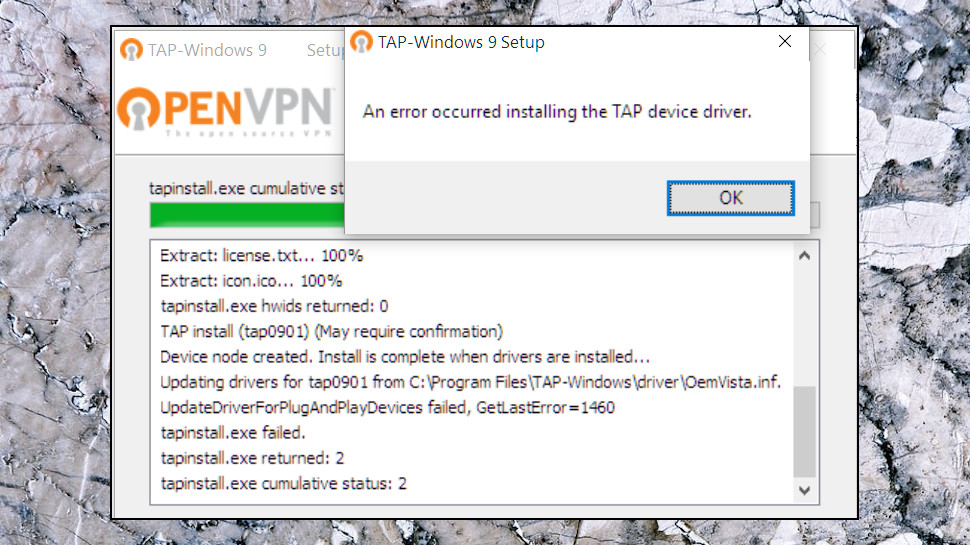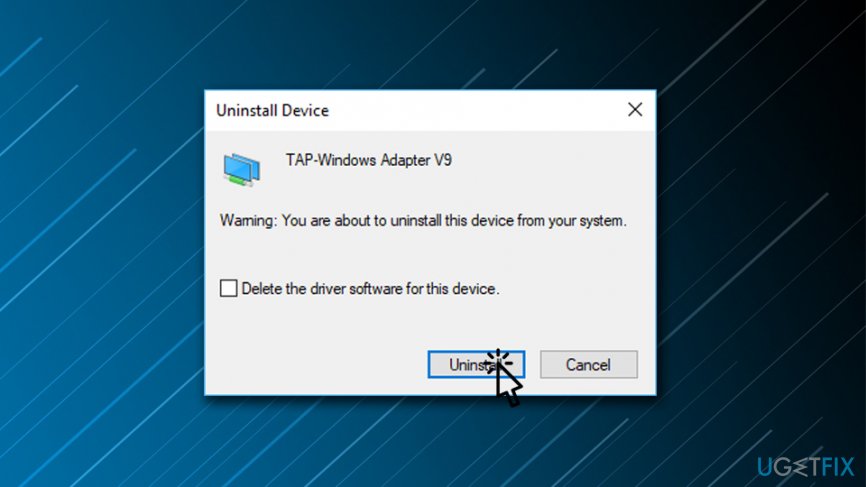

- #Ms toolkit failed to install tap adapter drivers#
- #Ms toolkit failed to install tap adapter driver#
- #Ms toolkit failed to install tap adapter manual#
- #Ms toolkit failed to install tap adapter full#
Windows also has command line utilities to accomplish these same kinds of tasks such as "devcon", "netsh", and "ipconfig". Then you rename the TAP adapter icon to something like "my-tap" and reference it using the -dev-node option in OpenVPN. You right click on the TAP adapter and set the TCP/IP properties, i.e.
#Ms toolkit failed to install tap adapter driver#
There are both 32-bit and 64-bit versions, but the latter are larger in size.īasically what happens when you install the TAP-Windows driver is that you get a new network adapter that shows up in your network control panel. It is also possible to install using Control Panel -> Add New Hardware, and it is possible to uninstall using Control Panel -> System -> Hardware -> Device Manager.Įxtracting TAP-drivers from OpenVPN installersĮxtracting TAP-drivers from an OpenVPN installer is relatively easy: you can use 7-zip to open the installer executable. C:\Program Files\TAP-Windows\driver\OemVista.inf.īy installing multiple times, you will create additional TAP-Windows adapter instances, which can be used for multiple concurrent VPN tunnels.
#Ms toolkit failed to install tap adapter full#
You need to specify the full path to this file, e.g.
#Ms toolkit failed to install tap adapter drivers#
Updating drivers for from C:\Program Files\TAP-Windows\driver\OemVista.inf. Install is complete when drivers are installed. View information about an installed driver:ĭevice node created.

Below are some common commands you can run from an administrator Powershell or cmd.exe console: In this case you can use devcon.exe from the Windows command-prompt. Occasionally you may need play with different TAP-driver versions. This setting is persistent across reboots.

Note also that the command line tool "netsh" can do many of these same functions.įor example, the following command will set the IP and subnet for my-tap: For the example below we will use an IP of 10.3.0.1 and a subnet mask of 255.255.255.0. Set the IP address and subnet mask of your new TAP device. Select Internet Protocol (TCP/IP) from the list and click on "Properties". Now right click again and select properties. Right click and rename this to something shorter and without embedded spaces such as "my-tap". You should see a "TAP-Windows Adapter" with a name like "Local Area Connection 3". On XP Go to Start -> Control Panel -> Network Connections.
#Ms toolkit failed to install tap adapter manual#
Manual configuration of the TAP-Windows adapter


 0 kommentar(er)
0 kommentar(er)
